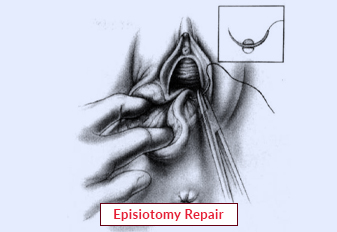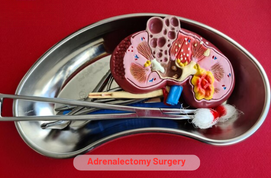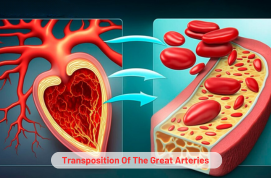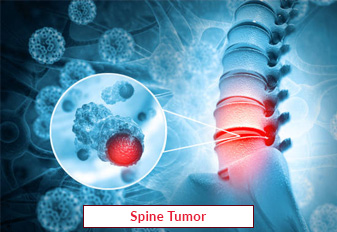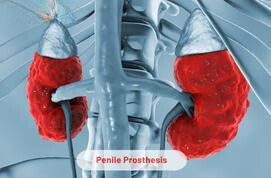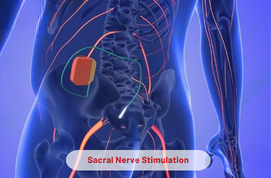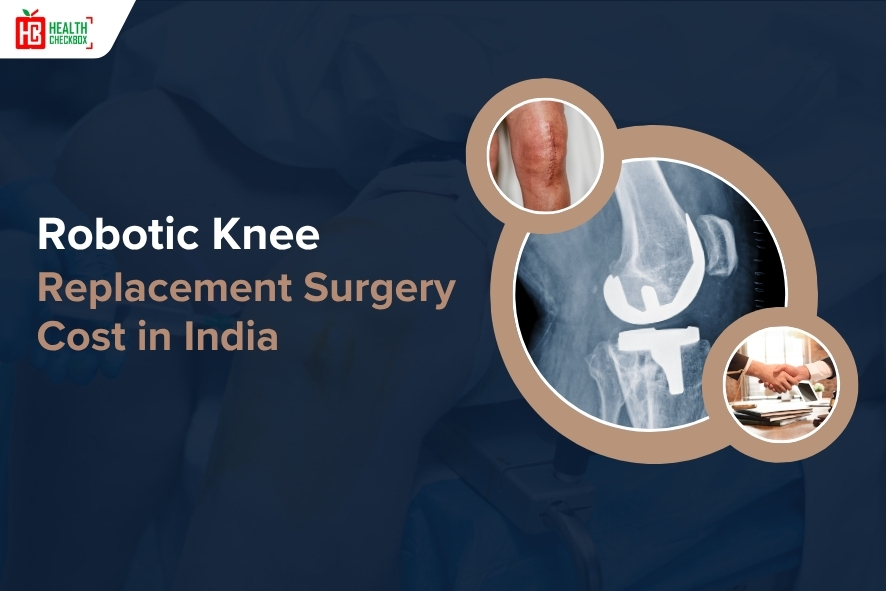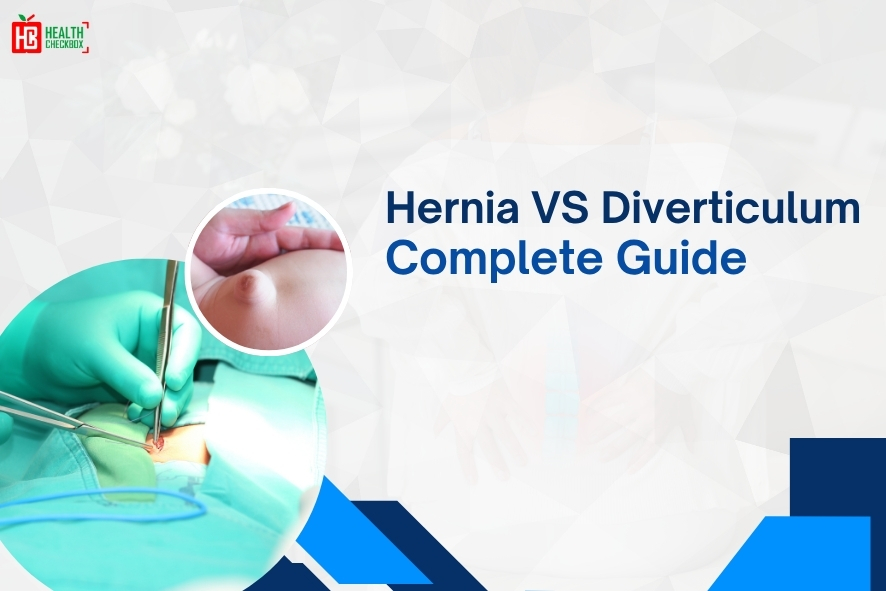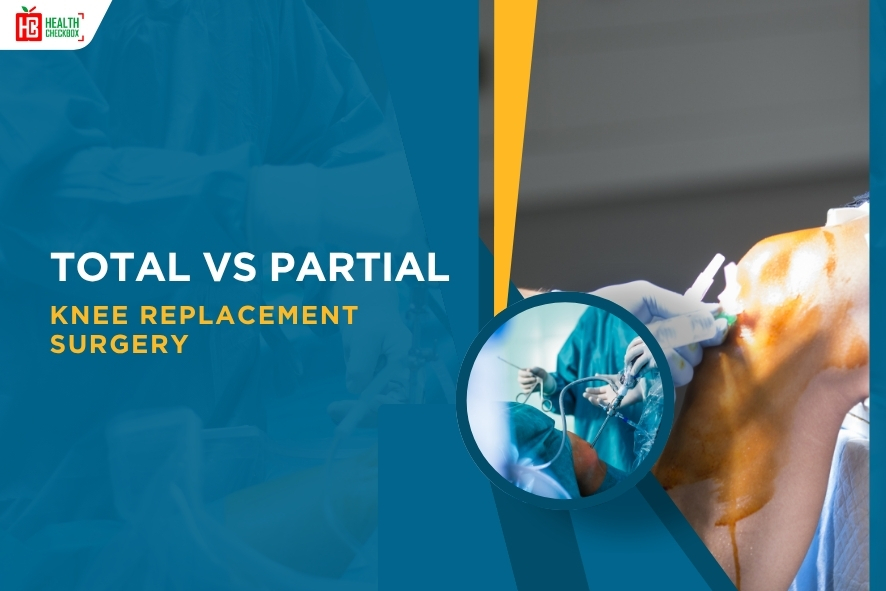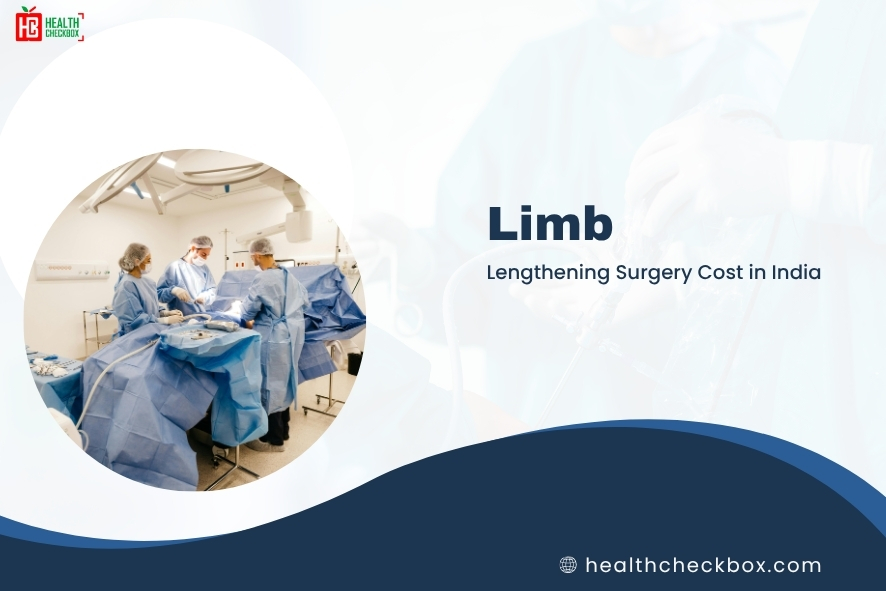In episiotomy repair treatment, a small cut is made by an obstetrician in the perineum. This is the area between the bottom of the vaginal opening and the anus at the time of child birth. The main aim of an episiotomy is to widen the vaginal opening and ease the baby’s delivery. Sometimes perineum will tear naturally as a baby comes out. This is called a perineal tear (or laceration), and to treat this problem, surgeons perform laceration repair. Episiotomies are sometimes necessary to facilitate the delivery of the baby or to prevent severe tearing of the perineum. Women should not feel anything during an episiotomy.
A doctor uses a local anesthetic to numb the perineal area so that patients remain calm. But they can expect some pain or inflammation once the anesthesia wears off. Episiotomy healing takes about one month, but this can vary depending on the degree of episiotomy. Natural tears usually require the same recovery time. Patients can feel pain, discomfort, and soreness for the first few weeks.
Types of Episiotomy Repair
There are two main types of this surgery performed during childbirth:
- Median (Midline): A vertical slit is made at the beginning of the vaginal opening, expanding toward the anus. This surgery has a higher risk of tearing the anal sphincter or rectum but is an easier incision to make.
- Mediolateral: The incision begins at the vaginal opening and extends at a 45-degree angle. There is less chance of the slit extending to the anal sphincter and rectum. Disadvantages of a mediolateral cut include difficulty to repair, loss of blood, and more discomfort during recovery.
Degrees of Episiotomy
There are various levels of perineotomy in relation to how severe the tear is. The degrees of an episiotomy are:
- First Degree: A small tear that only extends through the lining of the vagina.
- Second Degree: A tear that extends through the lining of the vagina and the underlying vaginal tissue.
- Third Degree: A tear that affects vaginal lining, tissues and extends towards the anal sphincter.
- Fourth Degree: In this case, tear directly affects the vaginal lining and tissues, anal sphincter, and rectum. This is the most severe type of tear with lots of complications.
Indications for Episiotomy
- The baby is in distress and requires immediate delivery.
- Due to prolonged labor, it has left the patient tired and dehydrated.
- When the baby is breech or shoulders are stuck in the pelvis.
- The size of the baby is larger than usual.
- Unable to push the baby.
Benefits of Episiotomy Repair
- The risk of uncontrollable tearing is decreased by episiotomies, which provide a more controlled and intentional cut during natural birth.
- This surgical incision may speed up the birthing process in some cases, especially when a quick delivery is vital to the baby’s health.
- Perineal trauma may be reduced by controlled incisions as opposed to spontaneous tearing.
- More extensive tears that can be difficult to fix might be avoided with this procedure.
Risks & Side-Effects of Episiotomy
- Infection
- Bleeding
- Scarring
- Painful sex
- Swelling
- Damage of a rectum and anal sphincter
- Issues with urine incontinence
- Prolonged recovery time
Episiotomy Repair Procedure
Anesthesia
- A local or regional anesthesia drug is administered to ensure the comfort of the patient during the process.
Cleansing and Preparation
- To reduce the chance of infection, the perineal part is cleaned with an antiseptic solution. After that, the space is covered to keep it sterile.
Consideration of the Episiotomy Area
- To determine the extent of the incision, whether there are any further tears present, and the general state of the perineal tissue. The medical professional inspects the episiotomy site properly.
Suturing
- Suture placement is the initial stage in the healing procedure. Depending on the size and location of the incision, several stitches may be used. Absorbable sutures are commonly used to close tissues, such as the skin, perineal muscles, and vaginal mucosa.
Layered Closure
- In order to guarantee correct alignment and tissue healing, the restoration is usually carried out in layers. The surface layers, such as the skin and subcutaneous tissue. Therefore, they are sutured after the deeper layers, which include the muscles and fascia.
Hemostasis and Wound Care
- In the whole process, hemostasis is achieved by carefully controlling any bleeding spots. A sterile saline solution is used to treat the wound, and any extra fluid or debris is carefully scraped out.
Evaluation of the Following Repair
- To look out for any signs of tension, gaps, or excessive tightness in the stitches the physician will properly inspect the repaired area.
- An examination of a rectal may be performed to check the integrity of the anal sphincter.
- A doctor will also check for any signs of bleeding, swelling, and many more.
- For controlling pain, some oral pain relievers are prescribed by the health experts.
Post-Care for Episiotomy Repair Treatment
- Patients are advised to use a perineal cold pack or ice pack to reduce swelling.
- Proper cleaning with mild soap and water.
- Pat dry with a clean towel.
- Use topical creams or ointments.
- Try to avoid strenuous activities.
- If the patient finds any complications, such as pain, swelling, bleeding, etc., they can contact the doctor immediately.
Our Other Services
Latest Health Tips
Oral Chemotherapy Vs IV Chemotherapy
Asthma vs Bronchitis: Types, Causes, and Symptoms
Cochlear Implant vs Hearing Aid
Heart Transplant vs Kidney Transplant
Robotic Knee Replacement Surgery Cost in India
Hernia VS Diverticulum: Complete Guide
Total vs Partial Knee Replacement Surgery
Limb Lengthening Surgery Cost in India: Cost Comparison
Submit Your Enquiry
Testimonials








